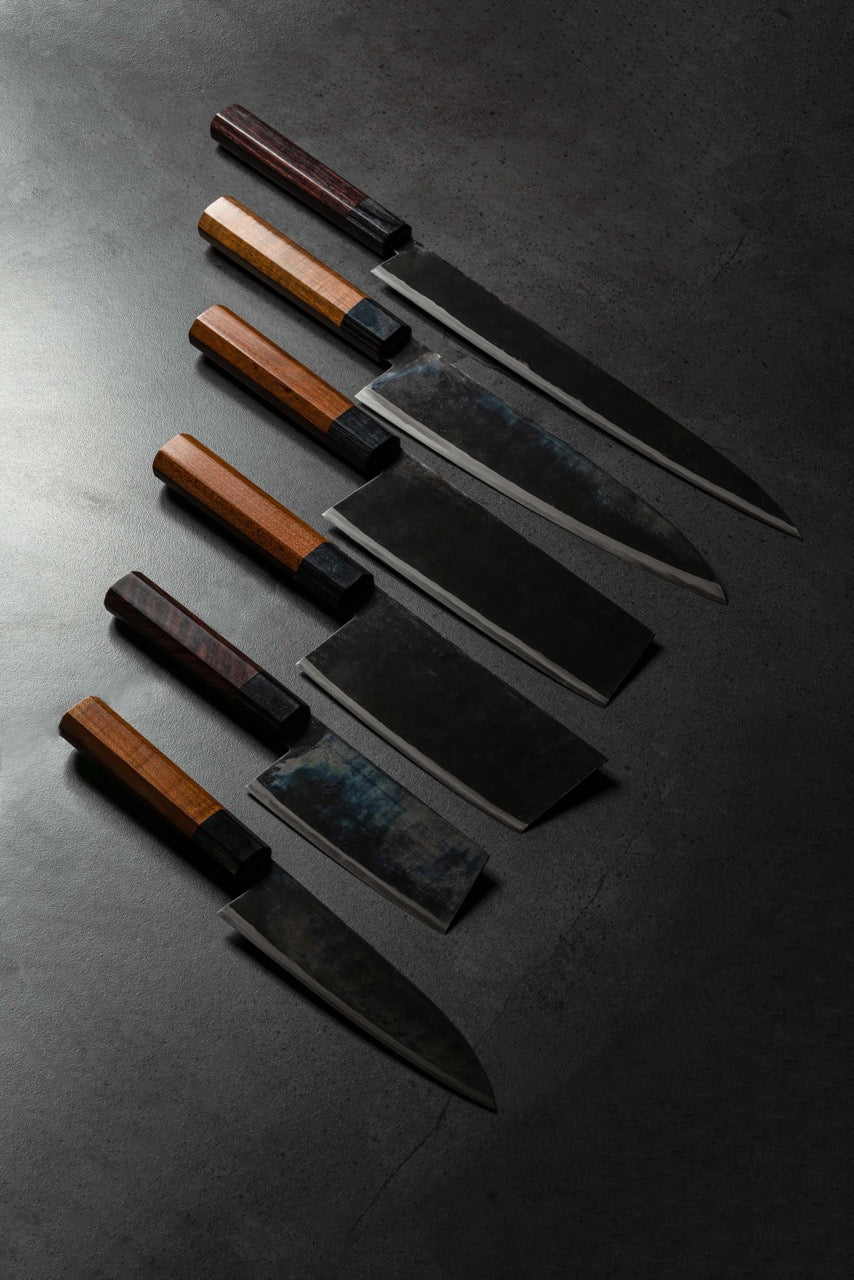
Hitohira TD Aogami #2 Stainless Clad Nashiji Yo Gyuto 210mm Walnut
Please note
Each handle is unique and may feature distinct variations, such as different shades or colors in the buffalo horn, which is part of its authentic, handcrafted character.
Store availability
*Transfer available between stores, contact us at info@staysharpmtl.com or 514-503-1185 (MTL) / 418- 440-7770 (QC)
Description
Le mot japonais Gyuto (牛刀) se traduit littéralement par épée à boeuf. Le gyuto est l’équivalent du couteau de chef occidental et est conçu pour tout couper : légumes, viandes et poissons. Il est fait pour être utilisé avec la méthode « push-cut », en soulevant la lame entre chaque mouvement de coupe, ou encore avec la méthode du balancier. Il est important que la lame soit droite au moment de l’impact avec la planche à découper pour éviter les dommages au niveau du tranchant du couteau.
The city of Sanjo in Niigata Prefecture has been famous for its blacksmithing since the 1600s. In the early years, they mainly forged nails by hand. Then, from 1660, different forging techniques were introduced by blacksmiths from Aizu. Thanks to this, the blacksmiths of the city began to diversify their production. The quality of Sanjo's tools and knives enjoyed a strong reputation in Japan at that time, and it still does today.
Simply explained, Aogami #2 developed by Hitachi Metals is a steel made from Shirogami #2 in which some chromium and tungsten are added for better durability and corrosion resistance. In addition to that, the higher carbon content of the steel allows for better cutting retention. Objectively, the Aogami #2 is an improvement over the Shirogami #2. For patina lovers, however, Shirogami steel will be more reactive to oxidation and could be an advantage.
Tips for best results
Make sure your knife will deliver its absolute best by having it professionally sharpened at least once a year. Please note that our meticulously handcrafted Japanese knives are – unless otherwise noted – carbon steel and not stainless steel. To prevent rust, make sure the blades are patted dry – especially when cutting acidic items. Never cut frozen foods, hard products, bone, or twist the blade when using. Never soak in water after use or put in the dishwasher. After use, store in a cool, dry place and avoid high temperature fluctuations.
Our commitment to you – our customers
Warranty
Every knife we carry has a lifetime warranty from manufacturing defects and errors. For example, if the handle becomes detached or cracks appear after a few weeks of proper use. Or if there are any blade cracks from the edge to the spine. While such defects are indeed rare, they can occur. In such cases, we will exchange the knife in question or give you a refund. Each warranty case is different depending on the criteria, and we reserve the right in each and every case to evaluate the applicability of our lifetime warranty in the event of any manufacturing defects and errors.
After-Sales service
Do you get the feeling that your knife just can’t “cut it”?
Each knife we carry is supplied with a so-called “factory edge”. Our chef knife range comprises more than 200 different products. While all our handcrafted Japanese knives ship with a “factory edge”, ultimate blade sharpness can vary. If you feel that your knife’s blade edge is not performing to its full potential, feel free to contact us and we will provide you with professional sharpening for free!
Oops! What about the truly Unthinkable?
Was it just through a slight slip of the hand that your knife accidentally fell on the floor and damaged its tip and blade, or it was used to cut a hard, frozen product and chipped? Don’t despair, get in touch with us and we will solve the problem through our in-house, professional sharpening and repair service.
Simply contact us or visit our store to get a free estimate.








